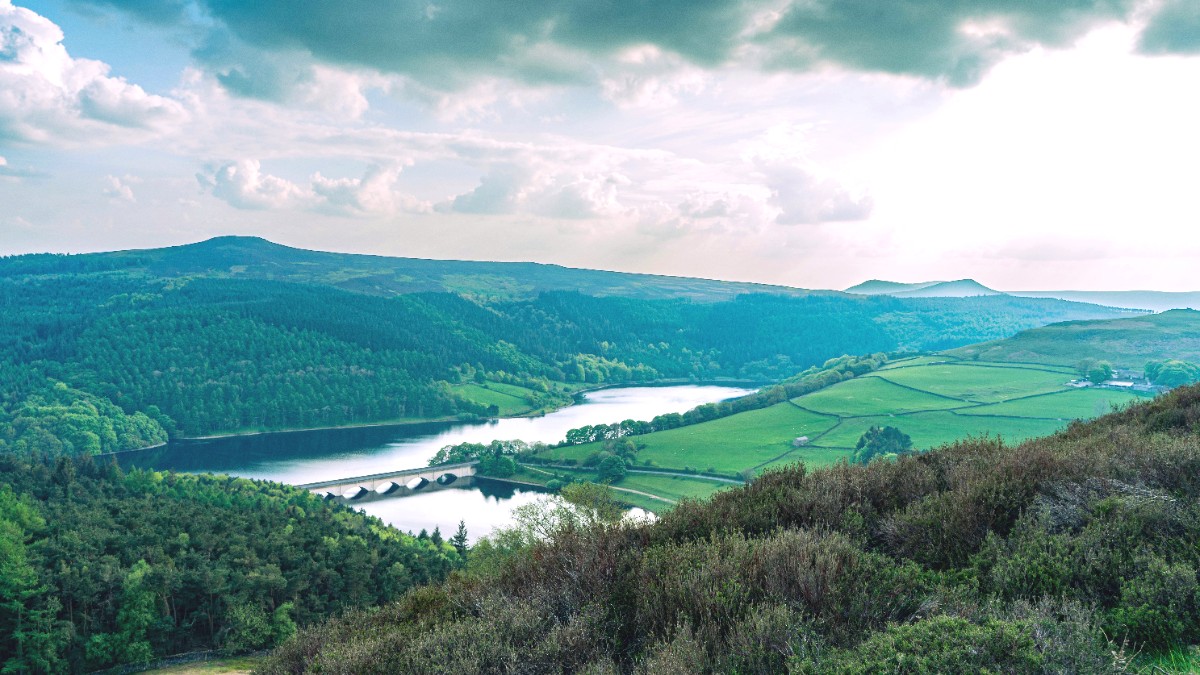
The Midlands, England
This is the Peak District, a place that captures the spirit of the English countryside. This guide details the best of this special region for a memorable journey.
The Peak District's history is as varied as its landscape. Evidence of prehistoric settlements dots the moorlands, including ancient stone circles and burial mounds. The Romans left their mark with roads and fortresses, drawn by the region's mineral wealth. Lead mining, in particular, shaped the landscape and economy for centuries, with remnants of this industry visible today.
Richard Arkwright's Cromford Mills, an UNESCO World Heritage Site, marks the birth of the modern factory system. This era brought new transport links, including canals and railways, many now popular walking and cycling trails. More recently, the Peak District gained recognition for its role in the access to nature movement. The Mass Trespass of Kinder Scout in 1932 was a pivotal moment in the fight for public access to open moorland, paving the way for the creation of National Parks across the UK. This history of industry, innovation, and advocacy for nature forms a deep layer beneath the beauty you see today.
The Peak District presents options for every traveler. Thousands of miles of trails, from gentle valley paths to demanding moorland ascents, attract hikers and cyclists. You explore grand stately homes like Chatsworth House, or discover the charm of medieval Haddon Hall. Picturesque villages like Bakewell, Buxton, and Castleton invite wandering cobbled streets, browsing local shops, and traditional pubs. Beneath the surface, ancient caves and mines present geological wonders and industrial heritage.
Local cuisine features hearty English fare, with the famous Bakewell Pudding and Derbyshire Oatcakes being treats to try. Seeking active outdoor escapades, cultural journeys, or peaceful breaks amidst beautiful surroundings, the Peak District delivers a rich and varied experience staying with you long after departure.
Grand stately home with gardens and art collections.
The park's highest point, offering rugged walks.
Traffic-free path on a former railway line, ideal for cycling and walking.
Explore ancient show caves like Peak Cavern and Speedwell Cavern.
A historic venue for cultural performances.
The Peak District is a haven for outdoor activities, with its diverse landscapes. From challenging gritstone edges to gentle limestone valleys, adventures await at every turn.
Thousands of miles of public footpaths and bridleways cross the park. Routes range from easy riverside strolls to strenuous moorland expeditions. Popular trails include Mam Tor, Dovedale, and the many disused railway lines now converted to accessible paths.
Dedicated cycle trails like the Monsal Trail and High Peak Trail are ideal for all abilities. Road cyclists find challenging climbs and scenic routes. Climbers tackle gritstone crags at Stanage Edge and Froggatt Edge. Caving and bouldering also hold opportunities.
Explore the Peak District and discover why it remains a cherished landscape for countless visitors. Its beauty, history, and range of activities create enduring memories.
The Peak District experiences distinct seasons, each with unique advantages and challenges. Weather here changes quickly, so preparing for all conditions is always prudent.
Peak District weather changes rapidly, even within a single day. Hill fog descends quickly. The northern Dark Peak generally has colder, wetter, and windier conditions than the southern White Peak.
Weather often ideal for outdoor activities. All attractions operate fully. Daylight hours are long. Crowds gather, specifically on popular trails and at major attractions. Accommodation and activity prices are higher. Booking ahead often advised.
Milder weather than winter. Fewer crowds than summer. Landscapes are appealing with spring blooms or autumn colors. Accommodation prices can be lower. Weather is unpredictable, with sudden changes. Some facilities might have reduced hours.
Few crowds. Prices may be lower. You experience dramatic winter landscapes, including snow. Trails are quieter. Cold temperatures and short daylight hours. Potentially icy or snowy conditions on trails, special gear needed. Some attractions may close or have limited opening.
Optimize your Peak District experience by aligning your visit with the best seasonal conditions for your preferred activities.
The currency in the UK is British Pound Sterling (£, GBP). Major credit and debit cards (Visa, Mastercard) are widely accepted. ATMs are in most towns. Inform your bank of your travel plans to avoid card issues.
Tipping in the UK is customary but less ingrained than in some other countries. 10-15% for good restaurant service. Not customary for pub drinks. Round up taxi fares. Tipping housekeeping is optional, usually £2-£5 per night.
Utilize free footpaths, pack picnics, consider National Trust/English Heritage memberships for property visits, and stay in youth hostels or campsites. Book accommodation and train tickets in advance for potential deals.
The Peak District is generally very safe with low crime rates. Main concerns relate to outdoor safety, like getting lost or sudden weather changes. Observe normal precautions against petty theft in towns.
Dial 999 for ambulance, police, fire, or mountain rescue. For non-urgent medical advice, dial 111. Emergency treatment is free in NHS hospitals; non-emergencies may incur charges.
No specific vaccinations are for UK entry; ensure routine ones are current. Tap water is safe to drink throughout the UK. Food hygiene standards are high.